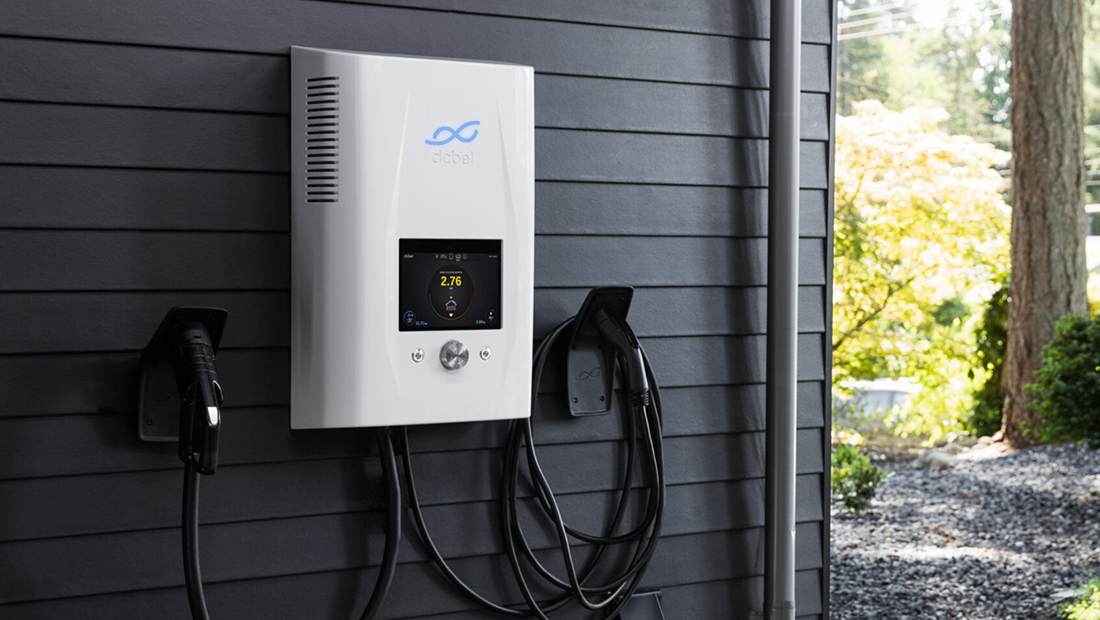Your schedule is packed. Bills are rising. And the weather’s getting weirder. That’s why smart devices are everywhere — to make life easier and give you peace of mind.
But the smartest part of your home? It’s not a gadget. It’s the system that quietly manages your energy behind the scenes.
It is about seeing the big picture to make your home more efficient, with personalized energy management that goes beyond what any single device or appliance can do.
After all, what’s a smart home without smart energy?
Energy That Works for You
Our homes are filled with more smart tech than ever, from intelligent thermostats to voice-activated assistants. Nearly half of all U.S. households now have a smart device.
Smart thermostats, energy-efficient smart appliances, smart lighting systems, and energy monitoring tools are top trends for intelligent home tech this year. For most people, these features are enough to call a home “smart”.
Smart energy management systems take home intelligence to the next level. They work in the background to seamlessly optimize your energy consumption according to your personal habits across smart energy devices, saving you money while offering unparalleled convenience.
In essence, these energy management systems offer a holistic approach to your home energy, which is an upgrade from a disconnected set of gadgets. It’s like the difference between a group of individual musicians and an orchestra – only by coming together do they create music that is greater than the sum of its parts. In other words, smart energy management allows residents to be the “conductors” of their homes.
A smart home energy management system isn’t just a cool new feature – it’s likely to be more necessary than ever in a future with more electricity use and more uncertainty. Electricity demand in the U.S. is expected to grow by a quarter by 2035, mainly due to the rising popularity of EVs and industry demand. Meanwhile, climate change drives up the risk of severe weather that can disrupt power transmission.
The Power of Home Energy Management Systems
An energy management system that handles everything can come with lots of benefits: lower energy bills, protection against the unexpected, convenient optimization, real-time energy monitoring, and smarter ways to connect with the energy grid.
They can provide clear info about how you use energy and how much you can save. A family might live in their home for years but not realize when peak electricity rates hit, or the times of the day that they consume the most energy.
An energy management system that handles everything can come with lots of benefits: lower energy bills, protection against the unexpected, convenient optimization, real-time energy monitoring, and smarter ways to connect with the energy grid.
Knowing this, and having the ability to make simple adjustments through their energy management system, could make their home more efficient and save them thousands of dollars every year.
Here’s an example of how: A commuter with this system installed at home returns from work and plugs in their EV at 6 p.m. Instead of charging immediately, the system waits until 2 a.m., when rates are the lowest.
The next morning, getting in their fully-charged EV, they receive a message: “Your EV charged overnight at the lowest rate. Estimated savings: $9.12 this week.”
How Smart Energy Devices Save You Money
A smart energy management system installed at home can also complement batteries or EVs, working together to lower energy bills. Battery technology has advanced considerably over the years, and their costs have dropped dramatically – lithium-ion batteries have gotten 90% cheaper since 2010.
Imagine a remote worker who normally pays high energy rates at home. One day they install a smart battery system that charges during off-peak hours and discharges during hours with peak pricing. At the end of the month, they get a summary:
“You saved $42 this month by shifting usage to off-peak hours. That’s 18% off your usual bill.”
The savings potential is all the greater because smart home energy management systems track your energy use and electricity rates in real time. It then coordinates the home’s smart energy devices – like a team behind the scenes working to saving you money.
The development of AI has opened up a world of possibilities in personalized energy management. It can pore over massive datasets, spot patterns, and make predictions very quickly and accurately. This saves you from having to watch your energy use all the time. It’s not just about automatic control, but anticipation.
You saved $42 this month by shifting usage to off-peak hours. That’s 18% off your usual bill.
A homeowner might have solar panels, battery system, and EV charger that are all operated by their energy management system. On a hot day, they all work together to pre-cool their home before peak hours, delay EV charging, and use the stored battery to avoid high rates.
At the end of the day, they get this message: “Today’s smart shift saved you $5.80 and reduced your carbon footprint by 2.3 kg CO2.”
Smart Devices That Work Together — Automatically
With different connected smart devices working together in seamless automation, residents can live with peace of mind that they have the energy to fulfill their needs at the best price possible. In our busy lives, ensuring backup for all our electrical devices during a power outage is the last thing we want to worry about.
With advancements in renewable energy technology and the cost of installation falling, generating power on-site is more feasible than ever. This reduces your reliance on centralized power grids that are vulnerable to disruptions.
A family in an area prone to severe weather could install a home battery system. During a thunderstorm, the grid goes down – but their lights stay on, the fridge keeps running, and the kids can finish their homework without interruption.

They get a message: “Power outage detected. Your backup battery is keeping your home running. Estimated 6 hours of power remaining.”
Having this real-time energy monitoring in a home allows for a deeper understanding of energy consumption habits, where energy is wasted, and how to boost home efficiency to cut down energy bills.
With advancements in renewable energy technology and the cost of installation falling, generating power on-site is more feasible than ever. This reduces your reliance on centralized power grids that are vulnerable to disruptions.
It could even allow for the monitoring of solar energy production and consumption. Imagine if you had the insight and control to both maximize solar power in your energy mix and save money?
Forming a virtual power plant, in which distributed home energy sources (like solar panels, batteries and bidirectional EVs) work together as a group to support the grid, takes this to a new level. Depending on local regulations, it can help households to earn money from their own energy installations and make the whole neighborhood more energy secure.
Meet Ara: The Brain Behind Your Smart Energy System
Fortunately, there is an energy management system out there that provides all these benefits. Ara coordinates your energy devices to reduce costs and increase resilience, without adding complexity. It shifts the focus from gadgets to orchestration.
A built-in solar inverter connects rooftop solar directly to the home and EV. This means that every watt of sunshine is put to work powering the home, charging your car, or selling power back to the grid. This is effortless home efficiency.
Other products simply control smart energy devices. Ara learns your habits, understands your utility’s pricing, and makes decisions on when to consume, store, or sell energy.
Ara coordinates your energy devices to reduce costs and increase resilience, without adding complexity. It shifts the focus from gadgets to orchestration.
Want to know how Ara thinks? Real-time energy monitoring provides visibility into your home energy flow and EV battery usage. Your EV can be charged with solar power during the day, and at night your home can be powered with a recharged battery – or even your EV.
Ara’s personalized energy management not only fits around your life, but can even to earn you money by selling excess energy back to the grid. You can earn up to $3,200 a year.
Other systems tend to treat solar, storage, and monitoring separately. Ara unifies them all, giving you data insight and intelligence on how much energy you generate, use, and sell. This connection is what makes Ara truly smart.
It comes with built-in features like Chorus and Orchestrate, so that seamless automation and personalization feel effortless. They intelligently manage your connected smart devices rather than just integrate them.
Whether you want to maximize solar usage, avoid peak rates, or ensure backup power during storms, Ara handles it all – quietly, efficiently, and without cluttering your wall with outdated hardware.
Your schedule is still busy, and the future is still unpredictable. But with your bills lower and energy supply safe, your home energy can give you peace of mind instead of worry.



